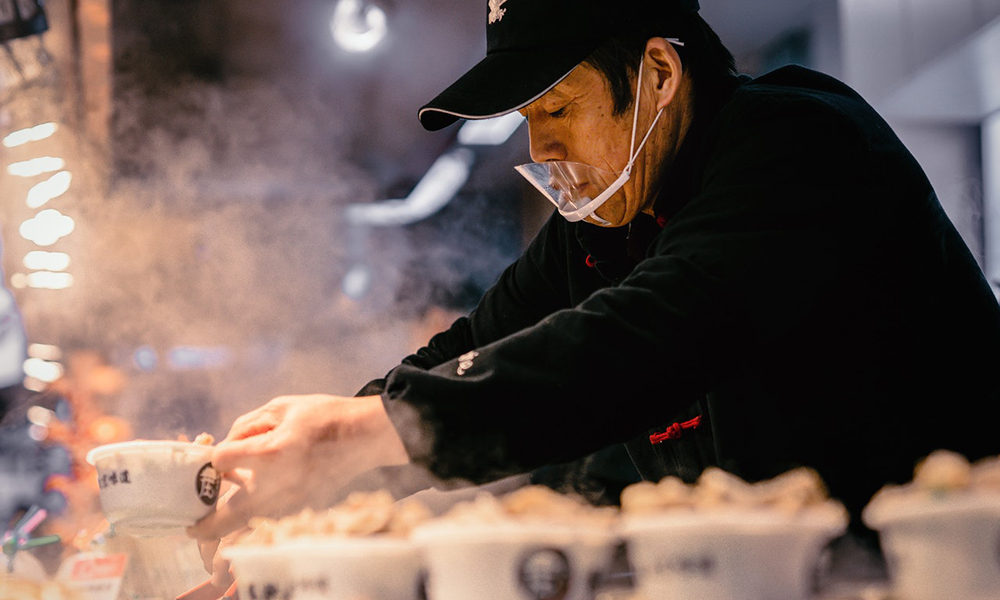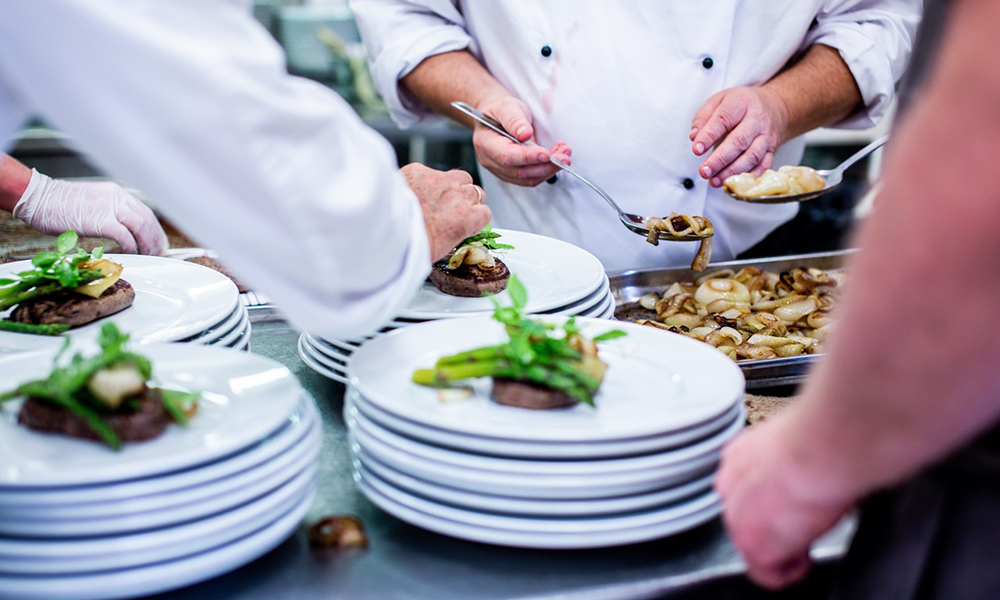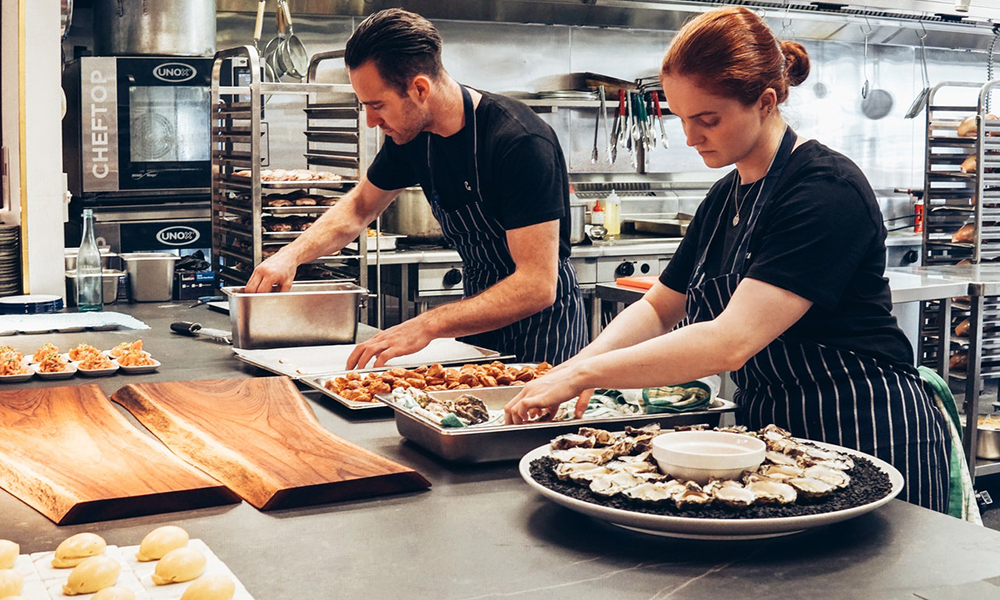Foodborne illness outbreaks or a food poisoning outbreak can take time to manifest. You can serve customers for days or weeks before complaints start to roll in. Those that do become sick will go to the doctor and have to trace their illness back to your establishment.
All of this takes time.
And dozens or more people can become sick before you know that there's a food safety emergency in your restaurant.
Most restaurants follow food safety guidelines, but few businesses have a plan in place if a food emergency breaks out. Quick reactions and responses can help you contain the emergency, lowering your risk of damaging your business' reputation and liability.

How to Handle Food Poisoning Outbreaks
Food safety in restaurants should be at the forefront of every owner's minds. You should have protocols in place that allow you to:
- Store food properly
- Discard food when necessary
- Keep surfaces clean
But all of the restaurant food safety guidelines can be followed and a food safety emergency can still occur. Coming up with guidelines, written down and available to managers, will help you avert some of the ramifications of the emergency.
You should also train managers on what should be done in your absence at this time.
Food poisoning is the most common issue and can occur when all restaurant food storage guidelines are followed.

Understanding How Food Poisoning Occurs
Food poisoning is almost always due to the negligence of someone in the restaurant. You want to handle these claims quickly, and corrective actions may include:
- Closing down for extended training
- Closing for a thorough cleaning
Food poisoning outbreaks occur due to:
- Food being handled by a sick employee
- Food handled by someone with poor hygiene
- Cross contamination
- Inadequate food storage techniques
- Food being used after expiration dates
- Improper food preparation
Most food poisoning issues can be avoided if food safety guidelines for restaurants are followed.
Responding to the Accusation
"The customer is always right" is a mantra that many owners follow. You want the best for your customers, and it comes naturally to say, "I'm sorry." Apologizing can have legal ramifications and can be seen as admitting guilt.
Admitting guilt leaves you vulnerable to legal action before you even know the facts or if you are the guilty party.
Pinpointing the source of illness can be difficult, and this burden of proof is on the customer. If you are accused, you'll want to ask the customer for:
- Personal contact information
- What dish they ordered
- Date of the occurrence
- When symptoms began
- Information on whether anyone else was sickened in the party
You can also ask if the person was diagnosed by a doctor. While you shouldn't apologize to the customer, you do want to let the customer know you're taking the issue seriously and will conduct a full investigation into the matter.
You may also want to have a customer complaint form, online and physical, that can be provided to the customer and filed for your own reference. The form should relate specifically to food poisoning issues and allows you to keep the customer's contact details available if you need to follow up after the investigation.

Investigating the Matter
You'll want to begin the investigation immediately. You'll want to make sure that the restaurant was open on the day in question and that the patron ate at the restaurant on the given day. You'll also want to begin investigating:
- Food. Check all ingredients included in the food, use-by dates, changes in supplier and ensure that the food was stored properly. Keep a sample of the food for testing by health authorities.
- Kitchen. You may need to close your kitchen for a night to clean all of your surfaces and cooking utensils. Pathogens can spread in the kitchen and will go from surface to surface. Ensuring that you clean all of these items will allow you to confidently use the kitchen safely again.
- Employees. Question your staff to make sure no one is sick. If an employee is sick, be sure that the employee is sent home until they're better. The health and safety of your patrons is more important than a head chef being out for a few days. Be sure employees are following hygiene best practices and have all of the supplies required to maintain the utmost in sanitization and cleanliness.
The final step in the process is one that a lot of owners do not want to make: contacting health authorities. You may be following all food safety tips for restaurants, but it can still be difficult to determine how an illness occurred.
There's also a risk that the complaint relates to actual food allergies and not a poisoning at all.
Health authorities will conduct a thorough review of the incident, and you may be required to report the incident by state law. Health officials are well equipped to trace the food ingredients back to a batch of food that was compromised or responsible for the food poisoning.
Containing the issue is important, and health authorities will be best equipped to help you contain the issue.
You may find that all of the ingredients were fresh and nothing was amiss. The next step is to conduct investigations into your staff and kitchen. You may find that your restaurant was not responsible for the incident.
It's also possible that a thermometer stopped working, so chicken was undercooked and led to the illness.
Test the entire kitchen for equipment or protocols that may be responsible for the emergency. If there are no elements of your operation found to be responsible for the incident, it's possible that you were not responsible for the person's illness.
But if multiple complaints start coming in, you may need to shut down operations immediately and call the health authorities. When foodborne illness outbreaks occur and multiple people begin complaining, restaurant food safety guidelines dictate that immediate action be taken.
You will want to immediately gather:
- Information on each customer
- Details of the food the customers ordered
- Dates and times when customers ordered
Look for similarities in the orders to narrow down which foods may have been involved in the outbreak. Perhaps you found that the chicken tenders were ordered by each customer, so you can confidently assume that the tenders were the source of the outbreak.
Immediately stop serving the tenders and contact the authorities. Keep the tenders for testing so that the authorities can test them to determine if there's an issue.
A full tracing may have to occur, which involves checking the batch number, contacting the supplier, testing the supplier's stock and then a full recall of the ingredients.
If you continue to allow complaints to go uninvestigated and allow the outbreak to spread, you may be held liable because you were no longer unaware of the issue.
The CDC has general outlines on how health inspectors should handle an outbreak. While these guidelines do not pertain directly to a restaurant, they can be followed with great success.
Once all sources of the outbreak have been determined and corrective measures have been taken, you will be able to begin serving patrons again. Make sure to work with health authorities to know when you're legally allowed to reopen.


